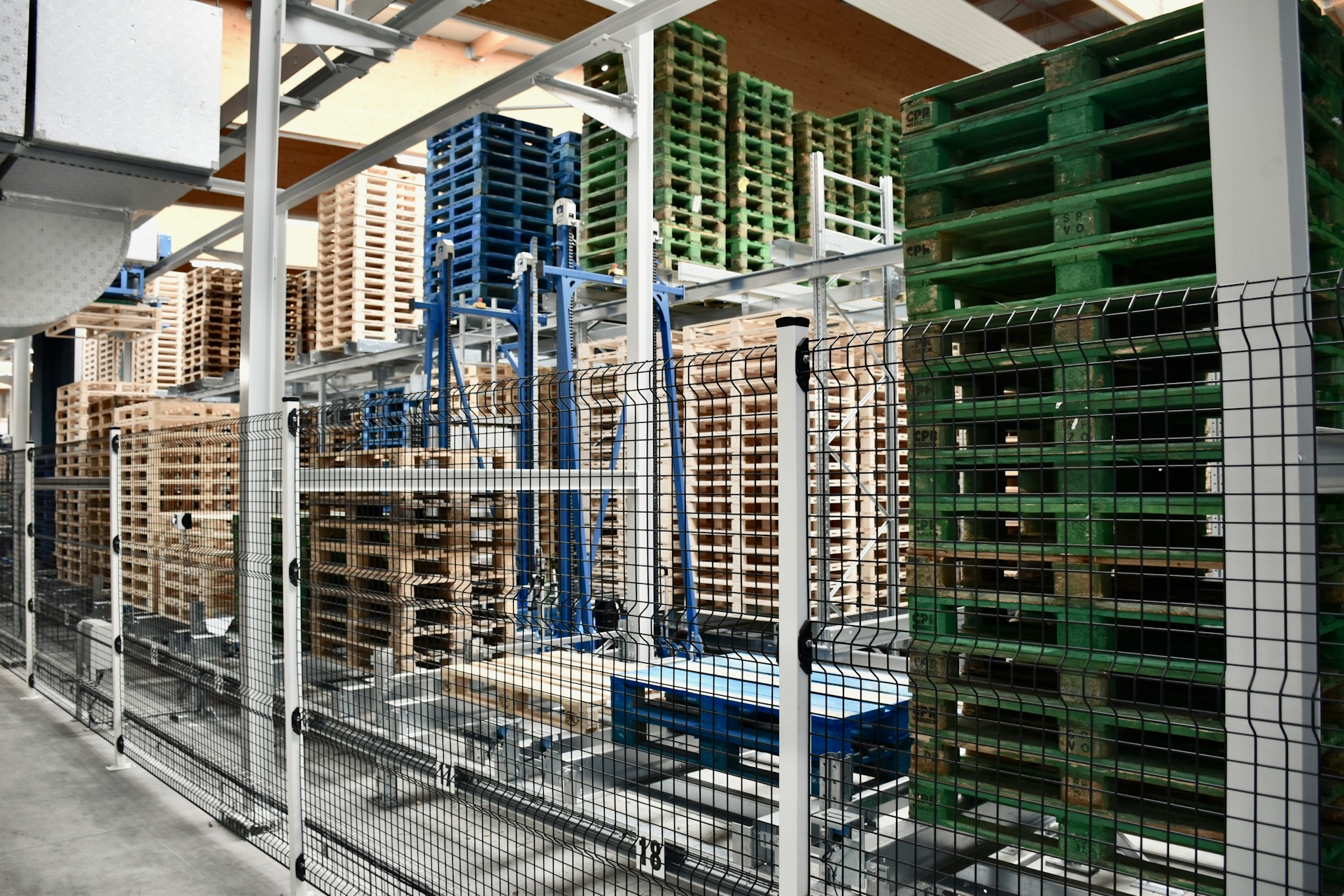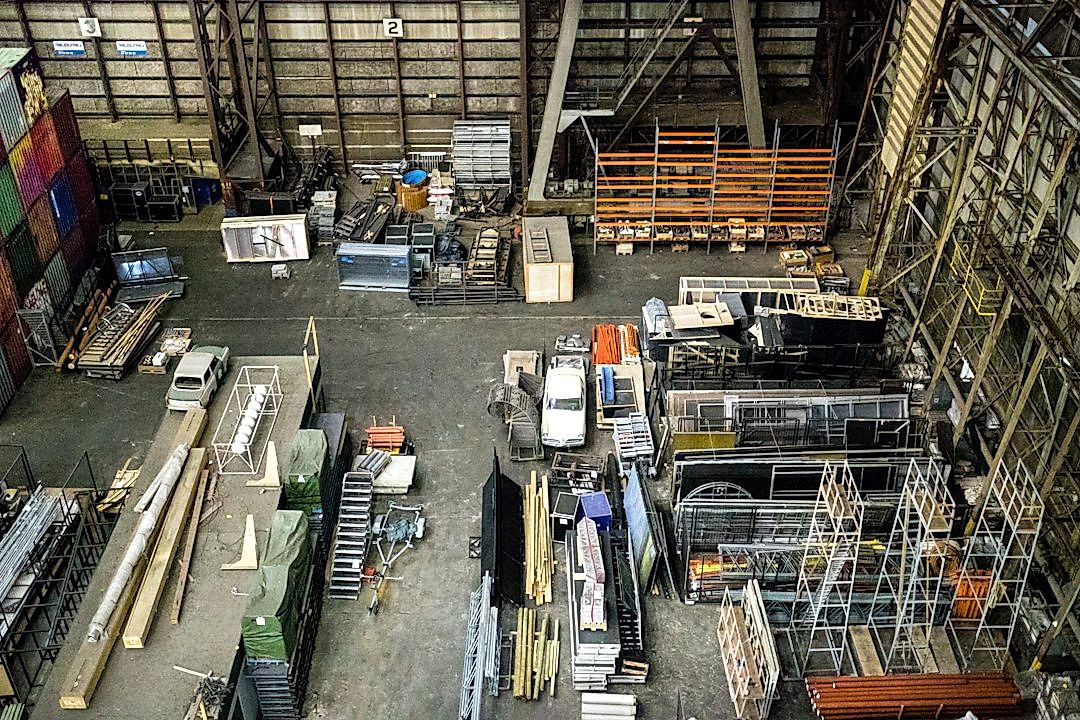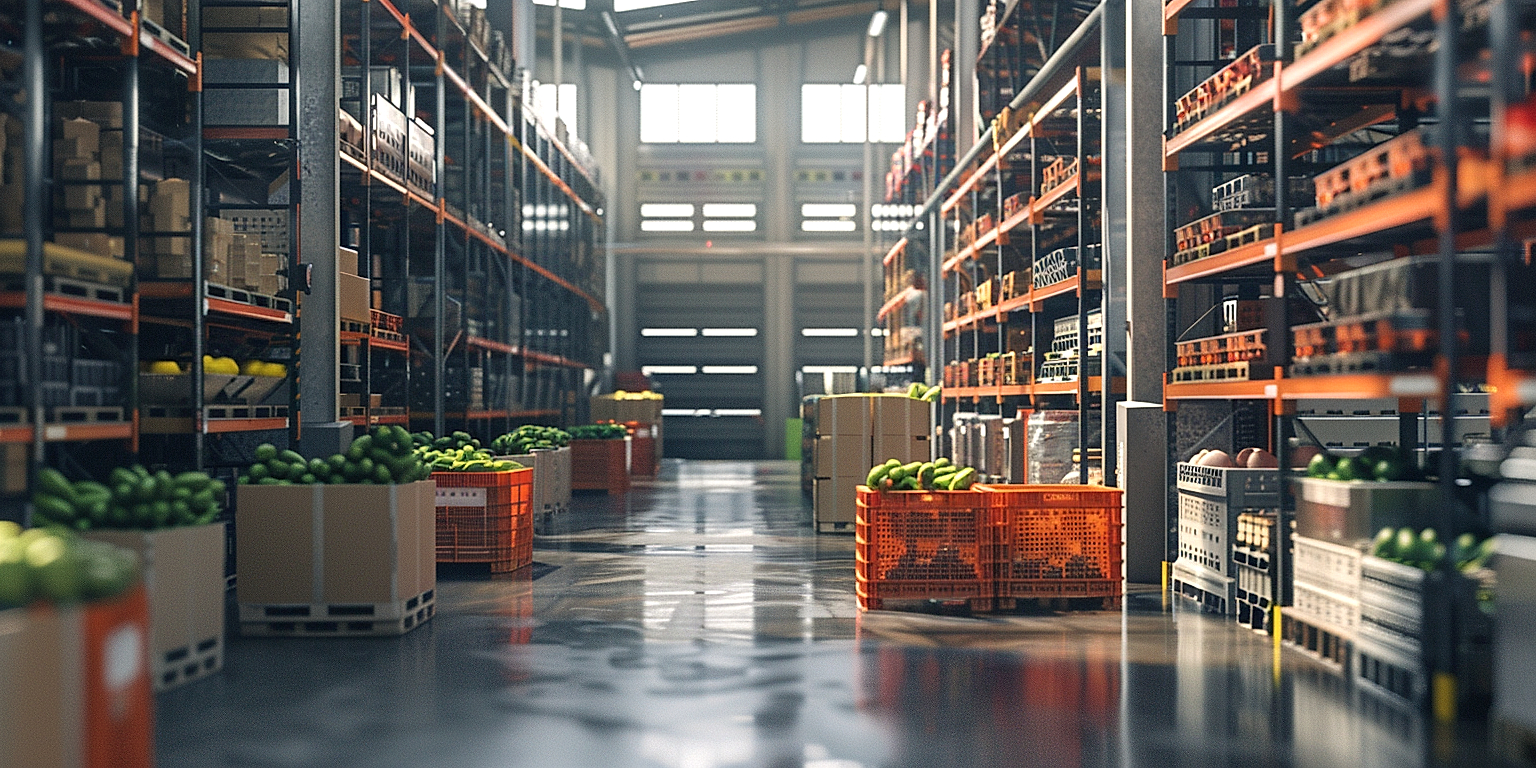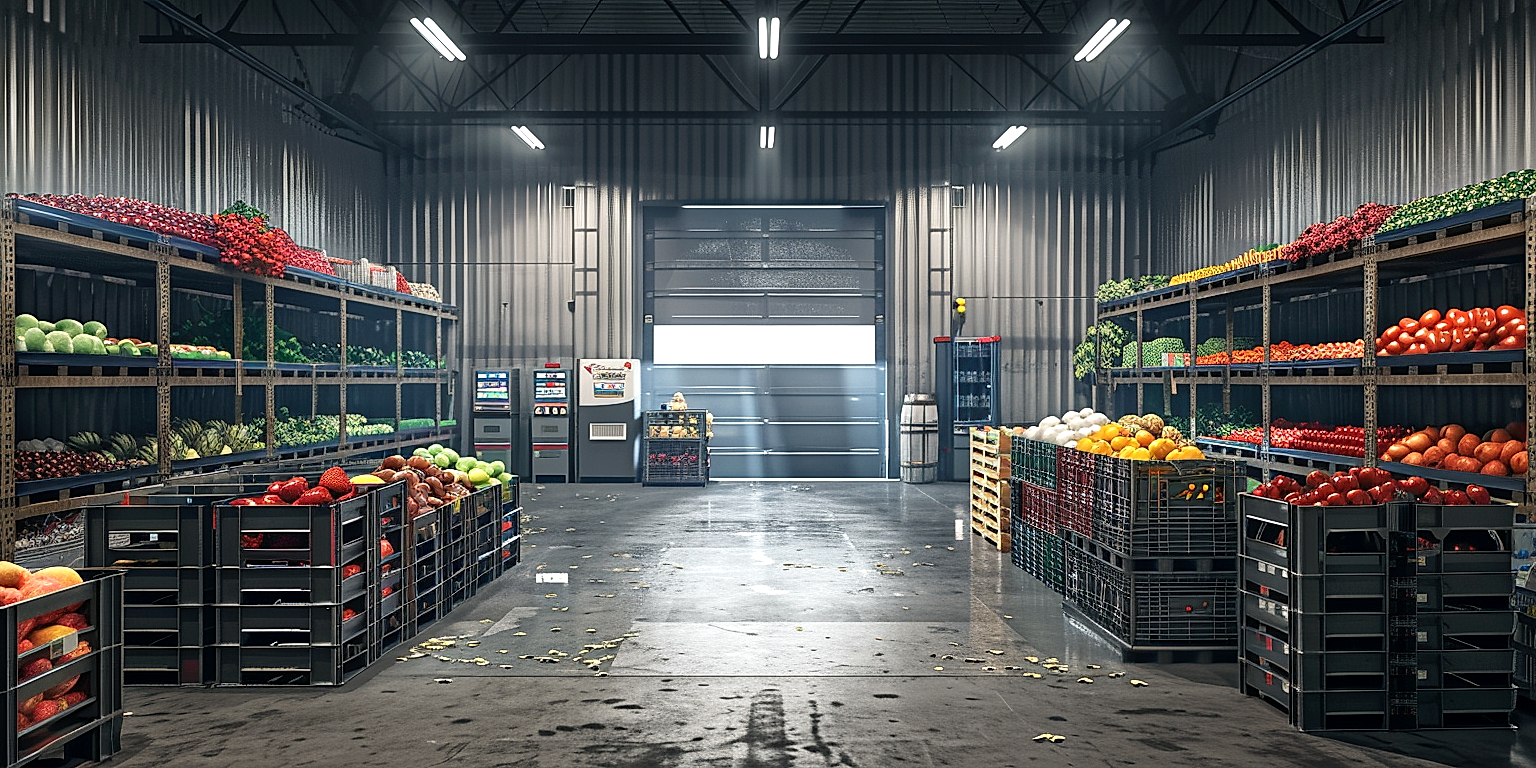The evolving dynamic of the supply chain industry is being driven by significant changes in warehouse operations.
This transformation is particularly evident in the area of fresh produce distribution, where it has become crucial to innovate and adapt to meet growing demand.
These developments indicate a shift in the traditional methods of distributing perishable goods.
With advancements in technology and continual changes in consumer behavior, it’s important to stay ahead of the game.
This piece aims to highlight key trends shaping the warehousing aspect of the supply chain and their impact on the distribution of fresh produce.
Understanding these trends is central to identifying strategic opportunities and potential challenges in the industry.
Warehousing Trends Impacting Produce Distribution
1. Implementation of AI-enabled warehouse management systems
The transformation of the warehousing landscape is predominantly attributed to the advancements in technology.
One of these significant advancements has been the implementation of AI-enabled warehouse management systems in the produce distribution industry.
These systems have revolutionized the way businesses are operating, paving the way for a new era of distribution.
AI-enabled warehouse systems not only increase efficiency but also improve the overall accuracy in warehousing operations.
The AI algorithms and machine learning protocols embedded within these systems are capable of predicting outcomes based on past data, enabling them to make more informed decisions.
As a result, we witness enhanced real-time decision-making, fostering the optimization of inventory allocation, order fulfilment, and other critical distribution elements.
The implementation of AI in warehousing has vastly automated the warehousing operations, leading to a significant increase in productivity.
It allows for automated data collection, eliminating human errors that are often the culprits behind supply chain inefficiencies.
Your produce is then transported efficiently with minimal wastage and maximum speed.
Apart from the functional benefits, the financial aspect is also signifying the importance of AI-integrated warehousing.
Unpredicted breakdowns are costly, but with AI, maintaining hardware equipment becomes easier and cost-effective through preventative maintenance.
With AI, warehouse management can also anticipate peak seasons and make necessary preparations to optimize workflow.
Also, data-driven strategies can assist in cost-cutting, making operations economically better.
Seamless integration of AI systems with warehouse operations has been creating a domino effect of efficiencies in produce distribution.
AI implementation is, beyond doubt, a vital trend in warehousing that is making significant leaps towards shaping the future of produce distribution.
Undoubtedly, harnessing the power of AI in warehouse management is becoming crucial in today’s highly competitive and technology-driven business landscape.
2. Increased reliance on cold chain logistics.
The warehousing industry, specifically those handling produce distribution, is seeing a significant shift towards increased dependence on cold chain logistics.
Credit for this change in the warehousing trend can be attributed to the demand for fresh food which is increasing in the global markets.
Therefore, cold chain operations are becoming more vital to assure the freshness and quality of perishable goods from farm to table.
With growing quality requirements and stringent food safety regulations, the need for an efficient cold chain logistics process is more pressing than ever.
This pressing need has resulted in a paramount shift in the warehousing sector which previously relied more on traditional logistics.
A significant factor contributing to increasing reliance on cold chain logistics is the rise in e-commerce for groceries.
This rise has led to a surge in online grocery shopping, necessitating the need for robust cold chain logistics for preserving and delivering fresh produce quickly and efficiently.
As the trend suggests, warehousing trends are focusing on efficient temperature-controlled storage and distribution systems.
With this focus, businesses can ensure that temperature-sensitive perishable goods are stored properly, thereby reducing waste and improving customer satisfaction.
A further aspect that strengthens the ongoing development towards cold chain logistics is the necessity to reduce the carbon footprint and utilise renewable sources.
Cold chain logistics, when implemented correctly, can help achieve sustainability goals due to the usage of advanced, energy-efficient cooling technologies.
Fruit and vegetable distributors have started realising that investing in advanced cold chain solutions not only ensures the freshness and quality of the products but also leads to a reduction in carbon emissions.
Increased reliability on cold chain logistics also has the potential to improve inventory management.
By understanding and forecasting the demand for refrigerated storage, warehouses can optimise their operations and maintain right levels of inventory.
One of the challenges of heavy reliance on cold chain logistics is the prevalence of power outages.
However, with the advent of autonomous energy solutions, this challenge can be mitigated to a great extent.
In conclusion, it is evident that the future of warehousing and produce distribution lies in mastering cold chain logistics.
3. Introduction of Autonomous Mobile Robots
The introduction of autonomous mobile robots (AMRs) is a key trend impacting warehouse management and by extension, the distribution of produce.
AMRs come with the advantage of increasing productivity by performing tasks that would otherwise require human effort.
Adopting this technology can reduce labor costs and optimize operations.
With their capability to be operational 24/7, AMRs can enhance efficiency and ensure continuity in the supply chain.
In the context of perishable goods like produce, AMRs can improve handling processes and reduce the chances of damage, resulting in lower wastage.
Moreover, they also bring in flexibility and scalability to warehouse operations, which can be critical given the fluctuating demand patterns of produce.
The use of autonomous mobile robots for order picking, stock replenishment, and transportation within the warehouse premises is a revolutionizing move in the warehousing industry.
With their superior technology, AMRs can handle large volumes of goods, making them a great fit for large scale, commercial warehousing facilities, ultimately supporting the broader supply chain efficiencies.
AMRs make the most out of artificial intelligence, enabling them to improve on their tasks over time and become more efficient.
Because of these capabilities, it is projected that the adoption of AMRs will become more widespread in the warehousing sector.
This technology is reshaping operations, and organizations globally are looking at AMRs to find solutions for their warehouse management challenges.
While the upfront investment for implementing autonomous mobile robots might be substantial, the long-term benefits make it a worthwhile investment for warehouses operating in the produce distribution space.
The implementation of AMRs suggests a renewed focus on automation, and a shift from manual labor to technology-driven operations is evident in the warehousing industry.
It’s important to note that whilst AMRs present significant opportunities, they also introduce new challenges such as the requirement of technological expertise and robust infrastructure.
In the face of this, it’s clear that with their potential to enhance warehouse operational efficiencies, AMRs represent a significant step forward in warehouse management, especially for the distribution of produce.
4. Implementation of blockchain for traceability.
One of the key trends impacting produce distribution in the modern warehousing industry is the implementation of blockchain for traceability.
Blockchain, essentially a digital ledger for recording transactions, holds massive potential for improving visibility, accountability, and efficiency in the complex world of produce distribution.
The transparency provided by blockchain technology allows every party involved in the distribution process to monitor the journey of produce from the farm to the consumer.
This is instrumental in guaranteeing the authenticity of products and confirming they are sourced from ethical and sustainable methods.
By sharing a common digital ledger that is tamper-proof and time-stamped, blockchain technology can increase trust among growers, wholesalers, retailers, and consumers.
Produce distributors can employ blockchain to ensure consistent quality throughout the distribution chain and make rapid recalls if quality issues occur.
This, in turn, can lead to a reduction in wastage, resulting in significant cost savings.
The improved visibility provided by blockchain technology allows stakeholders to identify and address inefficiencies, leading to streamlined operations and enhanced supply chain performance.
In the context of warehousing, blockchain can also be used to facilitate real-time inventory management, reducing the chances of stockouts or overstocks and enabling quicker response times to changes in demand.
Moreover, integrating blockchain technology with other emerging trends such as Internet of Things (IoT) devices and AI can further augment traceability and operational efficiency.
For instance, IoT sensors can gather real-time data about the condition and location of produce, which can then be instantly recorded and verified on the blockchain.
With such integrated systems, warehousing operations can become even more precision-oriented and data-driven.
That being said, the implementation of blockchain in warehousing is still in its nascent stages, and there are challenges to be addressed.
These include issues related to standardization, interoperability, scalability, and data privacy.
Nonetheless, with continuous advancements in the technology and increasing awareness about its potential, blockchain is poised to transform produce distribution, making it more transparent, efficient, and sustainable.
The embracing of blockchain technology for better traceability can certainly be seen as an impactful trend shaping the future of warehousing in produce distribution.
5. Growth in demand for small, urban warehouses.
In recent years, the logistics industry has seen a significant increase in the demand for small, urban warehouses.
This trend is largely due to the rapid urbanization and continued growth of online shopping.
The rise of e-commerce has created a need for speedy deliveries, further supporting the need for decentralized distribution centres, commonly known as urban warehouses.
The need for fast, efficient, and cost-effective delivery strategies is more crucial than ever for businesses in the digital age.
Small, urban warehouses enable companies to store products closer to their customers, thus reducing transportation costs and delivery times.
By shrinking the distance between storage facilities and consumers, small, urban warehouses increase efficiency and adaptability in supply chains.
Due to limited space in urban areas, these warehouses often need to make the most of their vertical space, leading to multi-story warehouses or innovative stacking solutions.
As such, the shift towards smaller, urban warehouses is also driving the innovation in warehouse design and operations.
Further, these facilities tend to be located in places with a high population density, allowing companies to reach a larger customer base.
This explains why produce distribution companies are increasingly favouring these urban warehouses – due to proximity to markets and capacity for faster turnaround times.
The move towards small, urban warehouses is a significant manifestation of the broader “last mile delivery” trend in logistics, aiming to get products as close as possible to the end consumer.
In the realm of produce distribution, this can play a critical role in ensuring fresher and higher-quality products arrive at customer doorsteps.
Small, urban warehouses also often employ advanced technology to handle storage and retrieval processes, further enhancing operational efficiency.
Despite the higher real estate cost for these prime locations, the benefits of enhanced delivery speed, reduced transportation costs, and increased customer satisfaction often justify the investment.
In the face of future urbanization, the demand for small, urban warehouses is expected to continue to grow.
The Bottom Line
The logistics industry is undeniably going through an evolution by harnessing technological advancements such as AI and blockchain technology, and embracing more efficient logistics strategies like cold chain logistics.
The advent of autonomous mobile robots is set to bring massive changes too while the increased demand for small urban warehouses is dictating new patterns in the logistics landscape.
By integrating these elements, the logistics industry is growing stronger and more seamless, establishing the next generation of lean and agile supply chains.
Therefore, continuous technological innovation and adaptation to changing demand trends can ensure the longevity and success of logistics companies in this progressively competitive market.




